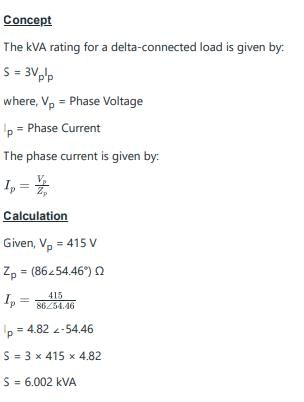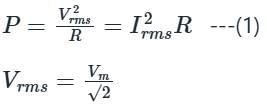Test: Balanced Three Phase Circuits - Electrical Engineering (EE) MCQ
10 Questions MCQ Test - Test: Balanced Three Phase Circuits
In a balanced three-phase system-delta load, if we assume the line voltage is VRY = V∠0⁰ as a reference phasor. Then the source voltage VYB is?
In a delta-connected load, the relation between line voltage and the phase voltage is?
If the load impedance is Z∠Ø, the expression obtained for current (IY) is?
A three-phase balanced delta connected load of (4 + j8) Ω is connected across a 400V, 3 – Ø balanced supply. Determine the phase current IR. Assume the phase sequence to be RYB.
A 415 V, three-phase star-connected alternator supplies a delta-connected load, each phase of which has an impedance of (86∠54.46°) Ω. Calculate kVA rating of the alternator, neglecting losses in the line between the alternator and load.
In a balanced three-phase system-delta load, if we assume the line voltage is VRY = V∠0⁰ as a reference phasor. Then the source voltage VBR is?
If the load impedance is Z∠Ø, the current (IR) is?
In wye or star connection _____________ of the three phases are joined together within the alternator.
The voltage between ______________ is called line voltage.
There are three voltage sources. Voltage Source 1 gives 200V peak voltage; voltage Source 2 gives 100V peak which lags behind voltage Source 1 by 120 deg; and voltage Source 3 gives 100V peak which leads voltage Source 1 by 120 deg. If these voltage sources and a 1Ω resister are connected in series, what is the power dissipation in the resistor?


















